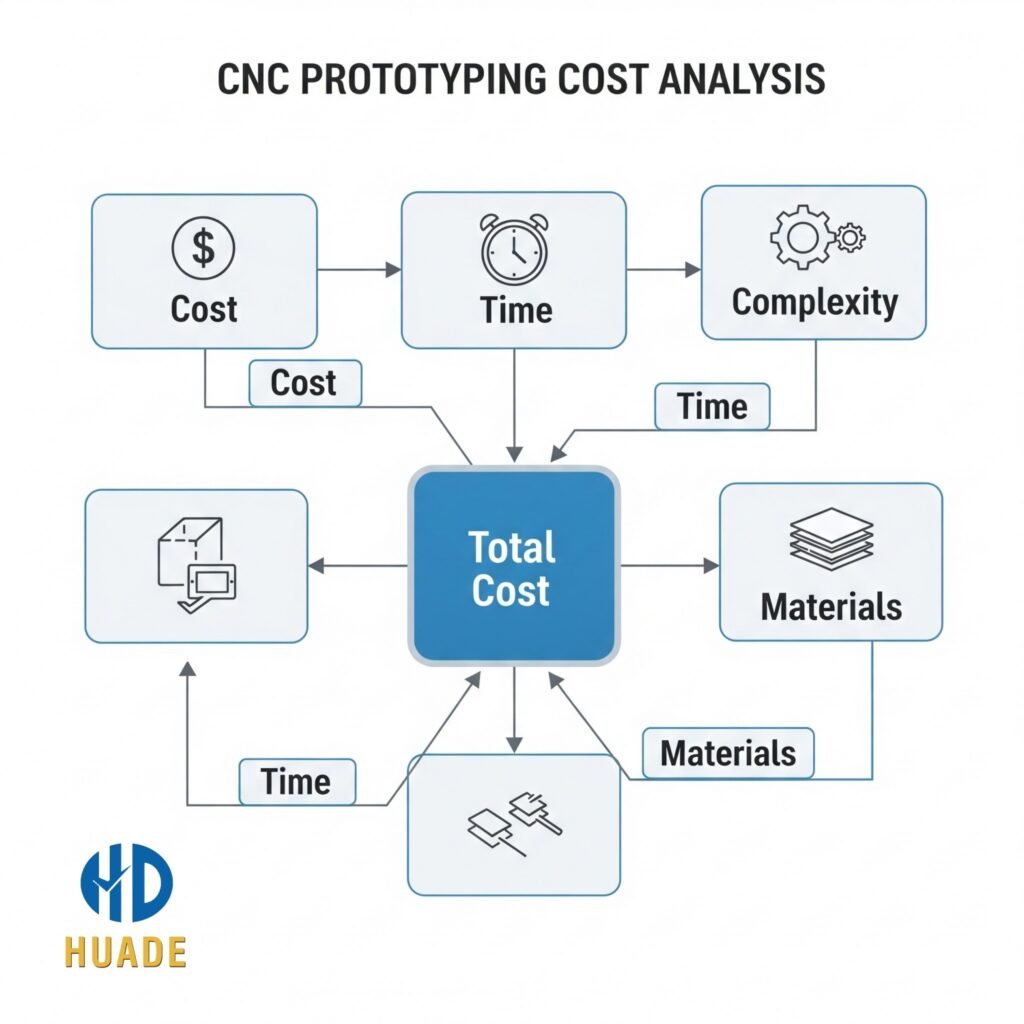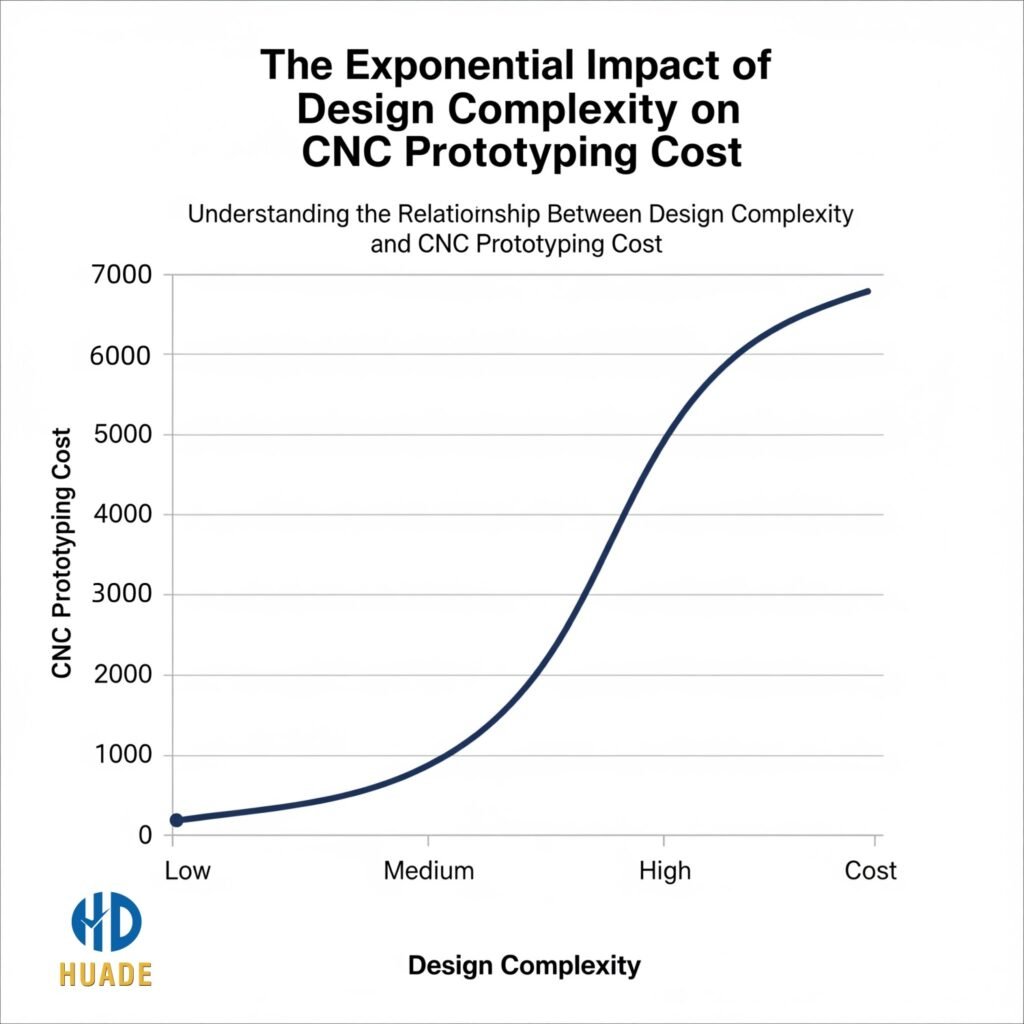
When you have a new product idea, turning it into a physical prototype is an exhilarating step. But before production can begin, a critical question looms: what will the rapid prototyping cost be? While an initial quote might give you a number, understanding the factors that build that price is key to optimizing your budget and avoiding unexpected expenses.
A well-informed designer or engineer can make strategic decisions that significantly reduce costs without compromising the integrity of the final part. This guide will provide a detailed breakdown of the five most critical factors that directly influence the rapid prototyping cost, empowering you to control your budget from the very beginning.
1. Material Costs
The choice of material is often the first and most significant factor in low cost rapid prototyping. Materials vary widely in price, and this extends beyond the raw material itself.
- Type of Material: The most common prototyping materials are aluminum alloys (like 6061-T6 and 7075-T6), plastics (ABS, PC, Nylon), and stainless steel. Aluminum is generally the most affordable, followed by plastics. High-performance alloys like titanium, Inconel, or tool steels can be significantly more expensive due to their raw material cost and the specialized tools required to machine them.
- Material Form and Availability: The form of the raw material also matters. Machining a part from a standard block is typically less expensive than a custom-cast or forged piece. Sourcing rare or exotic materials can also add to the lead time and overall cost.
- Waste and Scrap: The size and shape of your part relative to the raw material block will determine the amount of scrap. A part that can be efficiently nested within a standard block will be more cost-effective than one that generates a lot of waste. To explore a detailed comparison of common prototyping materials, visit our guide on How to Choose the Righg Materials for CNC Prototyping.
2. Machining Time
Machining time is arguably the most dominant factor in the final cost calculation. CNC machine shops typically bill by the hour, so reducing the time a part spends on the machine directly lowers the rapid prototyping cost. Machining time is a function of several variables:
- Complexity of the Part: The more intricate a design, the more machine time it will require. This includes the number of setups, tool changes, and the length of the toolpaths.
- Cutting Speed and Feed Rate: The hardness of the material dictates how fast the machine can cut. Softer materials like aluminum can be machined at higher speeds than hard tool steels, reducing the overall machining time.
- Surface Finish Requirements: A part requiring a smooth, polished finish will need more passes at slower speeds, significantly increasing machining time compared to a standard, rough-machined finish.
3. Design Complexity and Features
The complexity of a part’s geometry and features directly correlates with the required machining time and, therefore, the rapid prototyping cost. Simple, prismatic parts are inexpensive, while complex, organic shapes with many intricate features can be very costly.
- Tight Tolerances: Specifying very tight tolerances, especially on non-critical features, forces the machinist to use slower cutting speeds, perform more precise finishing passes, and conduct more frequent quality inspections. This adds significant time and cost. Understanding the difference between general and tight tolerances is crucial for managing your budget. For more on this topic, read our deep dive into A Deep Dive into CNC Machining Tolerances.
- Deep Pockets and Cavities: Machining deep pockets requires longer tools, which are prone to vibration and can only be run at slower speeds. This increases machining time and tool wear.
- Internal Corners and Radii: CNC tools are round, so they will always leave a radius in internal corners. Specifying a sharp internal corner requires additional, more expensive processes like Electrical Discharge Machining (EDM). A designer who specifies a slightly larger internal radius can save considerable cost.

4. Post-Processing and Surface Finishes
The process of post-machining a part to achieve a specific look or function adds to the overall rapid prototyping cost. The choice of a surface finish is not just aesthetic; it can also be a significant budget driver.
- Complexity of Finish: A simple bead-blasted finish is relatively inexpensive. In contrast, multi-step processes like anodizing with a custom color, professional polishing, or plating can add a substantial amount to the final bill.
- Labor Intensive: Some finishes, such as a high-gloss polish, are very labor-intensive and can only be done by hand. The more manual labor involved, the higher the cost.
- Number of Steps: A finish like hard anodizing requires cleaning, an etching bath, the anodizing process itself, and a final sealing. Each step adds to the cost and lead time. To explore the various finishing methods in detail and understand their pros and cons, check out our guide on The Ultimate Guide to CNC Surface Finish.
5. Order Volume and Part Size
This factor relates to the economies of scale. While the phrase “prototyping” implies low volume, scaling up an order can reduce the per-unit cost.
- Larger Orders, Lower Per-Unit Cost: For a batch of 100 parts, the cost of programming the machine, setting up fixtures, and preparing the raw materials is spread across more units, lowering the per-unit price.
- Part Size: Larger parts require more raw material and more machine time, both of which are major cost drivers. Furthermore, larger parts may require larger, more specialized CNC machines, which have a higher hourly rate.
How to Reduce Your Rapid Prototyping Cost
- Simplify Your Design: Remove unnecessary features, loosen non-critical tolerances, and use standard radii.
- Choose Standard Materials: Opt for common materials like 6061 aluminum or ABS plastic whenever possible.
- Communicate Clearly: Provide clear, well-annotated drawings to avoid any confusion or re-work.
- Collaborate with Your Manufacturer: A good manufacturer can provide expert feedback on your design, suggesting modifications to reduce costs without compromising functionality.
Conclusion
Managing the rapid prototyping price is a critical skill for any product developer. By understanding the key factors—from material selection and machining time to design complexity and order volume—you can proactively manage your budget and partner more effectively with your manufacturing service provider. To gain a broader perspective on the entire prototyping journey, we invite you to explore our comprehensive guide on The Ultimate Guide to CNC Prototyping.
At Dongguan Huade Precision Manufacturing Co., Ltd., we believe in transparent rapid prototyping cost and collaborative partnerships. Contact our team today for a free, detailed quote and expert consultation on how to optimize your design for both performance and cost-effectiveness.
